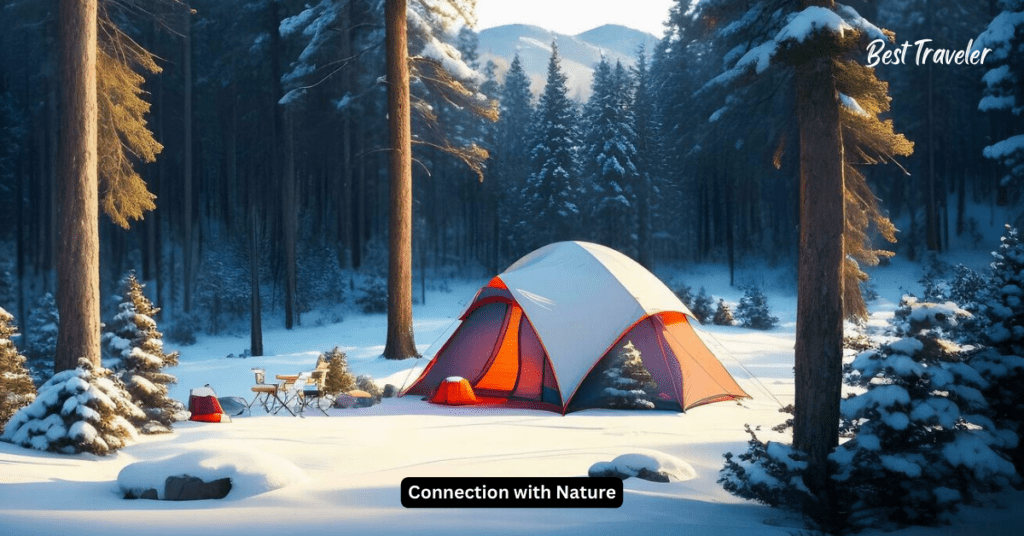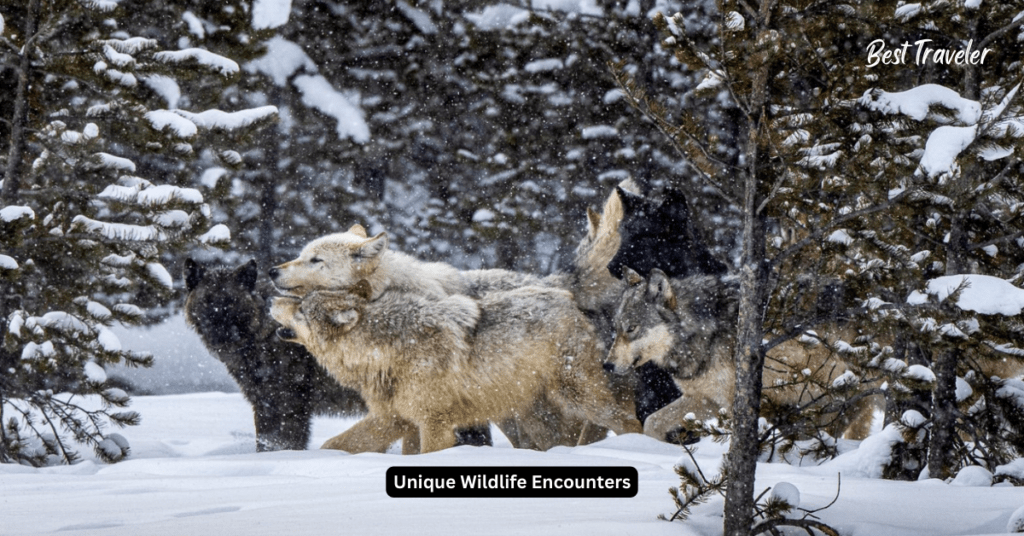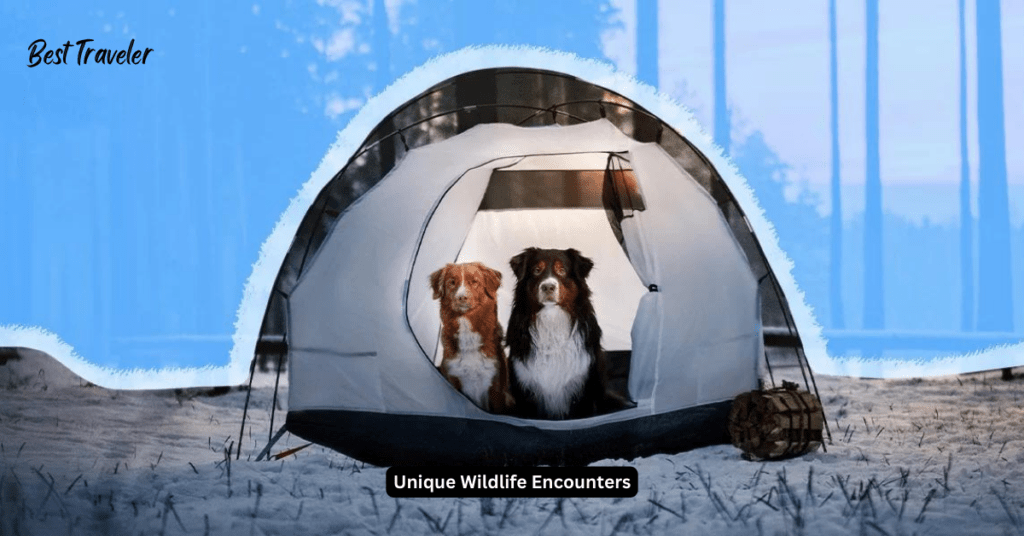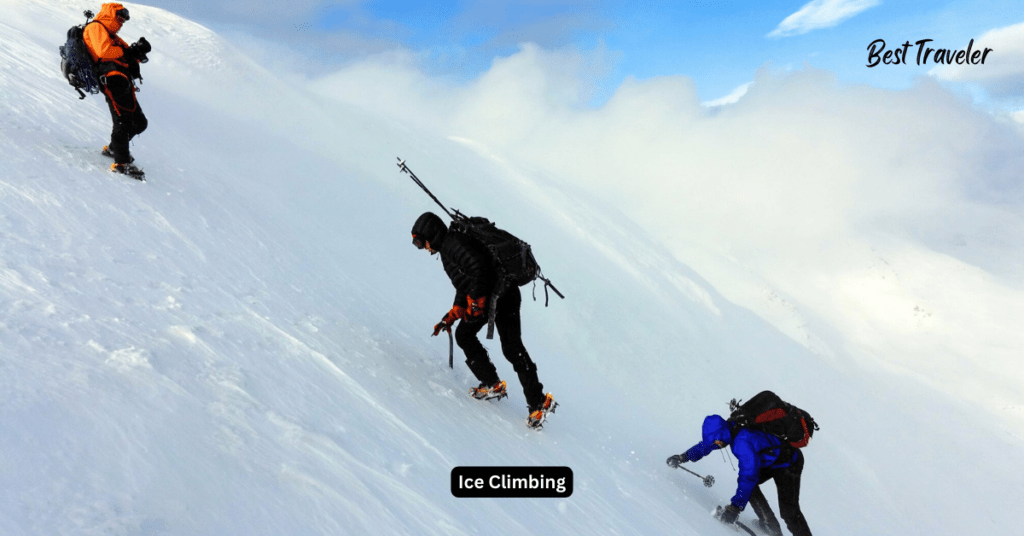Camping in the snow might sound like an activity only for the bravest adventurers, but for many outdoor enthusiasts, it’s an exhilarating experience worth embracing. Snow camping offers a unique set of challenges and rewards that attract people from all walks of life.
In this comprehensive guide, we’ll delve into the reasons why people are drawn to camping in the snow, exploring the physical, mental, and emotional aspects that make it such a compelling activity.
Connection with Nature

One of the primary reasons people go camping in the snow is to connect with nature in its most raw and untamed form. Winter transforms familiar landscapes into stunning vistas of glistening snow-covered mountains, frosted forests, and icy lakes.
For many outdoor enthusiasts, experiencing these natural wonders firsthand is a powerful draw that compels them to brave the cold and venture into the wilderness.
Sense of Solitude
Winter camping offers a unique opportunity to experience solitude in its purest form. As the landscape transforms into a pristine blanket of snow, familiar trails and campsites take on an otherworldly silence, punctuated only by the soft crunch of snow underfoot and the occasional.
Whisper of the wind through frosted trees. In this quietude, one finds a profound sense of detachment from the hustle and bustle of daily life, a reprieve from the constant noise and distractions of modern society. The blanket of snow absorbs sound, creating a serene atmosphere that invites introspection and contemplation.
Amidst this stillness, individuals are afforded the rare chance to truly connect with themselves and with the natural world around them. Whether gazing up at a sky ablaze with stars or standing in awe before a snow-capped peak, the sense of solitude in winter camping is not one of isolation, but rather of profound connection—to oneself, to nature, and to the vastness of the universe beyond.
Unique Wildlife Encounters

Winter camping offers a distinct opportunity for unique wildlife encounters that are often elusive during other seasons. As the snow blankets the landscape, many animals become more active, venturing out in search of food and shelter against the cold.
For wildlife enthusiasts, this presents an unparalleled chance to observe creatures in their natural habitat, exhibiting behaviors adapted to the challenges of winter survival. From graceful deer navigating snowdrifts to majestic elk foraging for sparse vegetation.
The winter wilderness teems with life, offering glimpses into the hidden rhythms of the natural world. Moreover, the pristine snow serves as a canvas for tracking elusive predators such as lynx, wolves, and wolverines, their footprints weaving a narrative of their movements through the frozen landscape. These encounters are not only thrilling but also educational.
Providing insights into the resilience and adaptability of wildlife in the face of harsh winter conditions. For those who venture into the snowy wilderness, these fleeting moments of connection with the animal kingdom serve as reminders of our shared existence and the delicate balance of life in even the most inhospitable environments.
Thrill of Adventure

For adrenaline junkies and thrill-seekers, camping in the snow offers an irresistible opportunity to test their skills, challenge their limits, and embark on epic outdoor adventures. From backcountry skiing and snowshoeing to ice climbing and winter mountaineering, there’s no shortage of exhilarating activities to pursue in the snowy wilderness.
Backcountry Skiing
Backcountry skiing in winter camping opens up a world of adventure and exploration amidst snow-covered landscapes. Unlike traditional ski resorts, backcountry skiing allows enthusiasts to venture into untamed terrain, far from the crowds and groomed trails.
As skiers carve through fresh powder and weave between frosted trees, they are immersed in the serene beauty of the winter wilderness, surrounded by towering peaks and untouched slopes. The experience offers not only exhilarating descents but also a sense of freedom and solitude that is unmatched in more conventional skiing settings.
Moreover, backcountry skiing fosters a deeper connection to nature, as skiers navigate through diverse terrain, from open meadows to dense forests, and gain a greater appreciation for the pristine landscapes they traverse. However, it’s important to note that backcountry skiing requires proper preparation and safety precautions, including avalanche awareness, navigation skills, and knowledge of local terrain and weather conditions.
With the right equipment, training, and mindset, backcountry skiing in winter camping offers an unforgettable blend of adrenaline, exploration, and communion with the natural world.
Snowshoeing

Snowshoeing in winter camping provides an immersive and accessible way to explore the snow-covered wilderness. As adventurers strap on their snowshoes and set out into the frozen landscape, they embark on a journey of discovery.
Traversing terrain that would otherwise be impassable on foot. Snowshoeing allows individuals to experience the serenity of the winter wilderness at their own pace, whether gliding across open meadows, ascending gentle slopes, or trekking through dense forests.
Unlike other winter activities that require specialized skills or equipment, snowshoeing is relatively easy to learn and requires minimal investment, making it accessible to outdoor enthusiasts of all ages and fitness levels.
Moreover, snowshoeing offers a low-impact workout that engages both body and mind, providing a refreshing alternative to indoor exercise routines. Along the way, snowshoers may encounter a variety of wildlife and natural wonders, from frolicking snow hares to frozen waterfalls, adding an element of excitement and discovery to their outdoor adventures.
Whether embarking on a solo trek or joining a guided excursion, snowshoeing in winter camping promises unforgettable experiences and a deeper connection to the beauty of the snowy landscape.
Ice Climbing

Ice climbing in winter camping offers an exhilarating and challenging adventure for thrill-seekers and outdoor enthusiasts. As climbers don their crampons and wield their ice axes, they ascend frozen waterfalls and icy cliffs, conquering nature’s icy sculptures with skill and determination.
Unlike rock climbing, ice climbing requires climbers to navigate vertical or near-vertical ice formations, using specialized equipment and techniques to ascend safely. The frozen terrain presents unique challenges, from brittle ice and shifting conditions to unpredictable weather and hidden hazards, adding an element of excitement and uncertainty to each ascent.
However, with proper training, preparation, and guidance from experienced climbers, ice climbing in winter camping can be a rewarding and unforgettable experience. Moreover, the frozen landscape provides a stunning backdrop for climbing adventures, with glistening ice cascades and towering pillars creating a surreal and mesmerizing environment.
Whether scaling frozen waterfalls in remote valleys or tackling technical routes on glaciated peaks, ice climbers are drawn to the thrill of pushing their limits and exploring new heights in the winter wilderness. Ultimately, ice climbing in winter camping offers not only physical challenge and adrenaline but also a profound connection to the beauty and power of the icy landscape.
Personal Growth and Challenge

Camping in the snow isn’t just about outdoor adventure; it’s also about personal growth and self-discovery. For many individuals, confronting the challenges of winter camping—such as extreme cold, limited daylight, and unpredictable weather—provides an opportunity to develop resilience, resourcefulness, and inner strength.
Resilience in Winter Camping
Winter camping demands a unique level of resilience, requiring individuals to adapt and persevere in the face of challenging conditions. From sub-zero temperatures to biting winds and heavy snowfall, the winter wilderness can test even the most seasoned outdoor adventurers.
However, it is precisely these challenges that provide opportunities for growth and development of resilience. Enduring the harsh elements fosters a sense of inner strength and fortitude, as individuals learn to navigate adversity with courage and determination.
Building and maintaining a campsite in the snow, staying warm and dry in freezing temperatures, and facing unexpected obstacles require creative problem-solving and adaptability. Moreover, overcoming these challenges instills a deep sense of accomplishment and self-confidence, as individuals realize their capacity to thrive in even the most unforgiving environments.
Beyond the physical demands, winter camping also cultivates emotional resilience, as individuals confront their fears and uncertainties in the solitude of the snowy wilderness. By embracing the discomfort and unpredictability of winter camping, adventurers develop resilience that extends far beyond the confines of the campsite, empowering them to tackle challenges and setbacks with resilience and grace in all areas of their lives.
Problem-Solving Skills

Winter camping presents a myriad of challenges that require individuals to employ creative problem-solving skills to overcome. From setting up camp in snow-covered terrain to navigating icy trails and managing limited resources, every aspect of winter camping demands adaptability and ingenuity.
One of the primary challenges is ensuring adequate shelter and warmth in sub-zero temperatures, which often involves improvising with available materials and techniques to construct sturdy tents and effective insulation.
Additionally, managing food and water supplies becomes crucial, as freezing temperatures can impact storage and accessibility. Problem-solving skills also come into play when navigating through treacherous terrain, where snowdrifts, ice patches, and obscured trails can present unexpected obstacles.
In these situations, individuals must assess risks, make informed decisions, and adapt their route accordingly to ensure safety and progress. Moreover, unexpected setbacks such as equipment malfunctions or sudden changes in weather require quick thinking and resourcefulness to mitigate risks and minimize impact.
By confronting these challenges head-on and finding creative solutions, winter campers not only enhance their outdoor survival skills but also develop a mindset of resilience and adaptability that serves them well beyond the campsite. Ultimately, problem-solving in winter camping is not just about overcoming obstacles; it’s about embracing the spirit of innovation and discovery that lies at the heart of every outdoor adventure.
Conclusion & Recap
In conclusion, winter camping offers a multifaceted experience that combines adventure, solitude, personal growth, and community. From the thrill of exploring snow-covered landscapes to the serenity of connecting with nature in its most raw and untamed form, winter camping appeals to a diverse range of outdoor enthusiasts seeking challenges and rewards beyond the ordinary.
Through activities such as backcountry skiing, snowshoeing, ice climbing, and wildlife observation, individuals immerse themselves in the beauty and majesty of the winter wilderness, forging bonds with nature and with each other.
Moreover, the challenges of winter camping—from enduring extreme temperatures to navigating treacherous terrain—foster resilience, problem-solving skills, and self-discovery, empowering individuals to confront adversity with courage and grace.
Whether embarking on a solo expedition or joining a group excursion, winter camping promises unforgettable experiences and a deeper connection to the natural world. So, if you’re ready to embrace the cold and embark on an adventure unlike any other, bundle up, gather your gear, and venture into the snowy wilderness for an experience that will leave you transformed and inspired.
FAQs
How do I stay warm while winter camping?
Staying warm during winter camping is essential for safety and comfort. Layering clothing, using high-quality insulated sleeping bags and sleeping pads, and staying active to generate body heat are all effective strategies. Additionally, ensuring your tent is properly ventilated to prevent condensation buildup can help maintain a comfortable sleeping environment.
Are there any safety precautions I should take while winter camping?
Yes, winter camping requires careful planning and preparation to ensure safety. It’s crucial to check weather forecasts, carry essential safety gear such as avalanche beacons and emergency shelters, and have a solid understanding of snow conditions and avalanche risks. Additionally, familiarize yourself with cold-related injuries and how to prevent and treat them.
What are the best winter camping destinations?
There are countless stunning winter camping destinations around the world, each offering its own unique landscapes and experiences. Some popular options include national parks such as Yellowstone and Banff, remote wilderness areas like Alaska’s Denali National Park, and scenic mountain ranges such as the Sierra Nevada and the Alps.
How can I prepare my gear for winter camping?
Preparing your gear for winter camping involves ensuring it’s capable of withstanding cold temperatures and harsh conditions. This may include insulating your tent with a snow skirt or extra tarps, using a stove suitable for cold weather cooking, and selecting appropriate clothing and footwear for winter conditions. It’s also essential to thoroughly test and familiarize yourself with your gear before heading into the backcountry.
What wildlife encounters can I expect while winter camping?
Winter camping offers unique opportunities for wildlife encounters, with many animals becoming more active in search of food and shelter. Depending on your location, you may encounter species such as deer, elk, moose, wolves, and even elusive predators like lynx and wolverines. Additionally, birdwatchers can enjoy sightings of winter-resident species such as owls, grouse, and ptarmigans.

